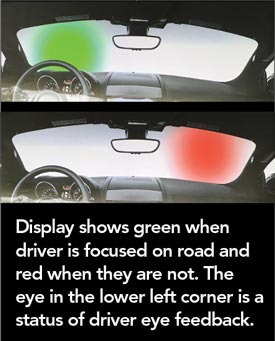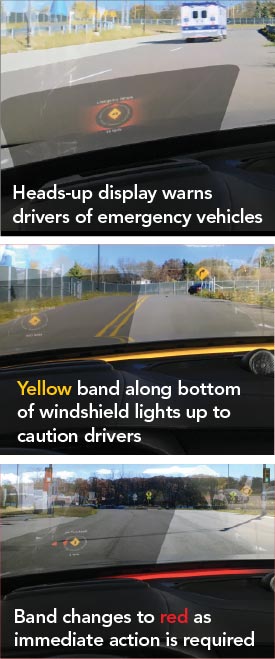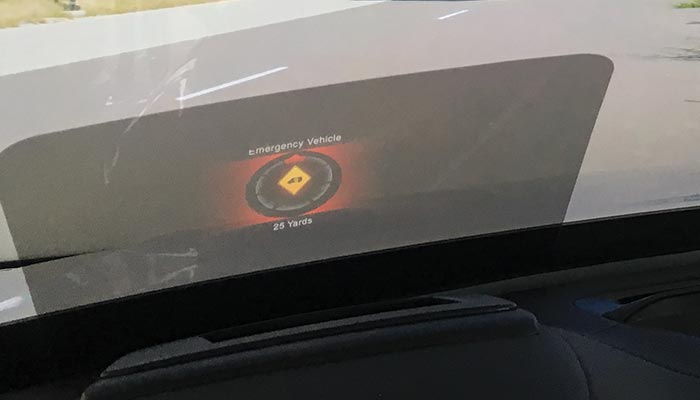“Welcome To Jurassic Park!”
Who could forget Richard Attenborough delivering that line with a smile in Steven Spielberg’s 1993 blockbuster? Recently, I had the opportunity to participate in an event of my own that was a mixture of Jurassic Park and the Jetsons. The Motor Equipment Manufacturer’s Association (MEMA) presented a Ride-and-Drive in Washington, D.C. where repair industry professionals, policymakers and manufacturers of cutting-edge vehicle safety systems got a chance to glimpse into the very near future.
 From cars that stop themselves and drive around objects to a Mercedes-Benz that parks itself in the garage and comes back out when you call it (I tried, “Here boy!” but was told I would have to use a smartphone to actually beckon my mount), the industry’s latest gadgets were on display. While the show was dazzling, it should be noted that the “dinosaurs” were not completely on their leashes, occasionally demonstrating that the bleeding edge of technology is an unpredictable place to live. For instance, one of the automatic braking vehicles ran over a dummy on a trolley as it ran out from between two cars. Another vehicle’s center stack exhibited the Windows Blue Screen of Death as it locked up during a demonstration of how it can help avoid pedestrians when backing up. (Maybe it is a vision of things to come when the cars decide that they don’t need us.)
From cars that stop themselves and drive around objects to a Mercedes-Benz that parks itself in the garage and comes back out when you call it (I tried, “Here boy!” but was told I would have to use a smartphone to actually beckon my mount), the industry’s latest gadgets were on display. While the show was dazzling, it should be noted that the “dinosaurs” were not completely on their leashes, occasionally demonstrating that the bleeding edge of technology is an unpredictable place to live. For instance, one of the automatic braking vehicles ran over a dummy on a trolley as it ran out from between two cars. Another vehicle’s center stack exhibited the Windows Blue Screen of Death as it locked up during a demonstration of how it can help avoid pedestrians when backing up. (Maybe it is a vision of things to come when the cars decide that they don’t need us.)
Seriously, even the manufacturers of this technology impressed each other with the amazing ideas that are only a few years away from helping bad drivers live longer.
Automatic Emergency Braking (AEB) systems were all over the place, in part because it is an easy technology to demonstrate in a parking lot. Many manufacturers like Continental, ZF/TRW and Bosch were taking the automatic braking up to a NHTSA Level 2 by adding the additional driver assist of controlled steering to dodge unexpected lane changes and even dummies who ran out from between cars.
There are two different modes of this technology that NHTSA is looking for. The first is known as Dynamic Brake Support (DBS). DBS helps a driver who under-brakes. The other mode, Crash Imminent Braking (CIB), is more invasive. This mode of AEB will slow or stop the car even if the driver has not applied the pedal to help reduce severity or eliminate the potential of an accident.
 OEs have promised to bring AEB to all new cars by 2020. Many of the predecessors to these systems have been in cars since 2006. Some of the other technologies on display were not quite as active, but they will be critical in the future of car design, nonetheless.
OEs have promised to bring AEB to all new cars by 2020. Many of the predecessors to these systems have been in cars since 2006. Some of the other technologies on display were not quite as active, but they will be critical in the future of car design, nonetheless.
Delphi was demonstrating a pair of warning systems. The first warns drivers of dangers outside the vehicle, including emergency vehicles that are approaching, vehicles in your blind spot and other issues ahead of the vehicle. This warning device utilizes a light at the base of the windshield that changes color depending on the level of danger.
Delphi’s system manages danger within the vehicle by tracking the driver’s eyes to see what they are looking at or if they are getting drowsy. The heads-up display will show red if the driver is looking away from the road too long, green when they are focused on the road, and will monitor eyelid position to determine if a driver is experiencing fatigue. This is not the first time such a system has been available, but Delphi promises that their design is a substantial evolution from earlier drowsy driver systems.
The final component of the MEMA Ride-and-Drive was a demonstration of what you do every day. We showed our visitors how we use scan tools with help from Snap-On. Standard Motor Products demonstrated TPMS calibration, and Hunter showed attendees how the ADAS cameras and steering angle sensors need to be calibrated after an alignment to work properly. The key message from our group was that availability of information and tooling to service these systems is absolutely key to ensuring they work right in the future. Independent repairers service 70% of the vehicles on the road, and by year five of a vehicle’s lifecycle, that number grows even greater.
During our demonstration, we were visited by the NHTSA, NTSB, the Deputy Secretary of Transportation, several legislators and aides, and a number of OEs and press members. Many of the connections we were able to make with these attendees were very important in helping their understanding of the automotive aftermarket and the key role it plays in mobility and vehicle safety.
I want to sum this up by going back to the beginning. I made light of some of the teething pains of many of these new systems, but it is truly overwhelming to consider the amount of brainpower, research and testing that has gone into their development. If I told you 10 years ago that you would soon be able to park your car in the garage once, and it would learn how to park itself and reverse the procedure, would you believe it? It not only exists today, but will be on showroom floors before you know it.














